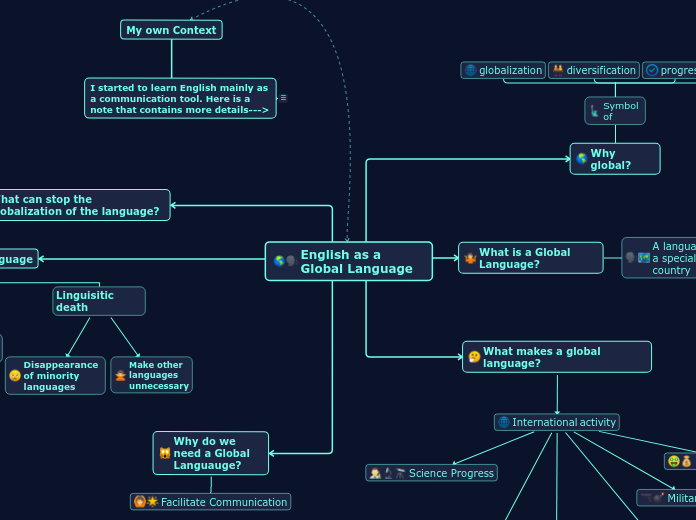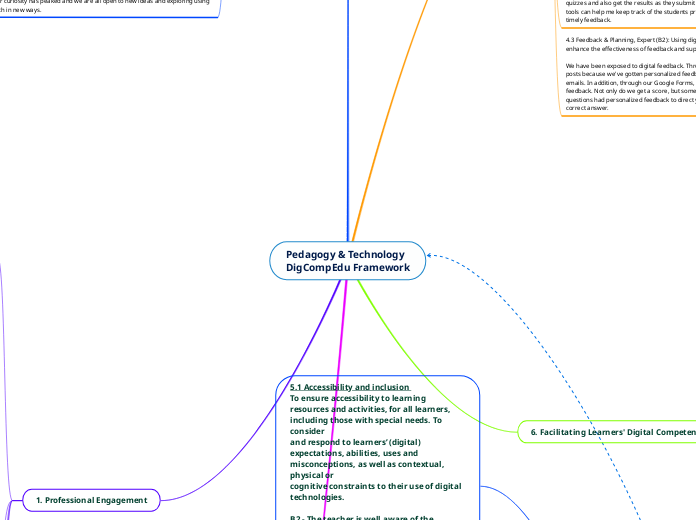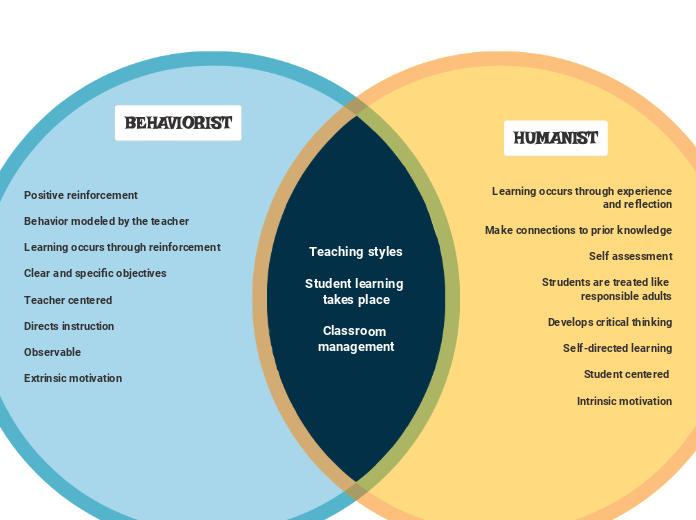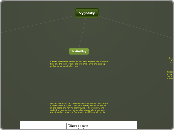LMS 104: OnlineCommunication, Collaboration, and Community
Introduction
How to navigate this module
Our Themes
Other words
Engaging
Enthusiasm
Learners
Teamwork
Real
Personal
Sharing
Authentic
Open
Inclusion
Tools for Communicating Online
On the Ground vs Online
Formal Guidlines
inclusivenes
Reveiw of Technology for Education
Review of LMS Intro through LMS 103
Welcome
On Ground vs Online Courses
DSC Course Types
Totally Online
Hybrid?
Half and Half
Face to Face
In terms of
Collaboration
Universals
Evaluations of Your Courses
Fostering a Community of Learners
Strive for Presence
Maslow applies to both
Not just an online thing
My College Experience
Culture shock was a deliverate part of my college experience. The school hit us with Existenialism, other religions, cultural relativism and other things designed to shake us up.
Jim Shaeffer
Assessing Student Work
Using Media to Teach
Guiding Discussions
Making Assignments
Preparing Learning Activities
Test Prep
Schedules
Course Start and End Dates
Face to Face has Online Elements
Teaching and Learning
Overview:
Knowles' theory of andragogy is an attempt to develop a theory specifically for adult learning. Knowles emphasizes that adults are self-directed and expect to take responsibility for decisions. Adult learning programs must accommodate this fundamental aspect.
Andragogy makes the following assumptions about the design of learning: (1) Adults need to know why they need to learn something (2) Adults need to learn experientially, (3) Adults approach learning as problem-solving, and (4) Adults learn best when the topic is of immediate value.
In practical terms, andragogy means that instruction for adults needs to focus more on the process and less on the content being taught. Strategies such as case studies, role playing, simulations, and self-evaluation are most useful. Instructors adopt a role of facilitator or resource rather than lecturer or grader.
Scope/Application:
Andragogy applies to any form of adult learning and has been used extensively in the design of organizational training programs (especially for "soft skill" domains such as management development).
Example:
Knowles (1984, Appendix D) provides an example of applying andragogy principles to the design of personal computer training:
1. There is a need to explain why specific things are being taught (e.g., certain commands, functions, operations, etc.)
2. Instruction should be task-oriented instead of memorization -- learning activities should be in the context of common tasks to be performed.
3. Instruction should take into account the wide range of different backgrounds of learners; learning materials and activities should allow for different levels/types of previous experience with computers.
4. Since adults are self-directed, instruction should allow learners to discover things for themselves, providing guidance and help when mistakes are made.
(See computers for further discussion of this topic).
Principles:
1. Adults need to be involved in the planning and evaluation of their instruction.
2. Experience (including mistakes) provides the basis for learning activities.
3. Adults are most interested in learning subjects that have immediate relevance to their job or personal life.
4. Adult learning is problem-centered rather than content-oriented.
References:
Knowles, M. (1975). Self-Directed Learning. Chicago: Follet.
Knowles, M. (1984). The Adult Learner: A Neglected Species (3rd Ed.). Houston, TX: Gulf Publishing.
Knowles, M. (1984). Andragogy in Action. San Francisco: Jossey-Bass.
Community
Assessment of "Community"
Choose Option 1 or Option 2.
Option 1:
Choose any course with which you are familiar. Assess that course in terms of its strengths and weaknesses in facilitating community. Use the concepts from "Community, Courses and Maslow's Hierarchy" in your critique.
Option 2:
Tell us how we have done as community builders in creating and presenting this course.
Assess the Florida Online Academy in terms of its sthrengths and weaknesses in facilitating community.
Use the concepts from "Community, Courses and Maslow's Hierarchy" in your critique.
Assessment
Scenarios to Discuss
When and Why to Use Groups
Managing and Motivating article
Using Groups in D2L
Encourage More "Intense" Discussions
Encourage Collaboration
Organize
Discussions and Community
Intro
Instrucional System Development
Media Selection
Guided by Learning Styles
Guided by Objectives
Learning Activities
Content Delivery
Course Organization
Objectives
Task Analysis
Outcome based learning
Online Assessments
Media selection
Learning Outcomes
College Policy
WSJ: Legaized Cheating
Norman: In Defense
Culture of Integrity
Theories
Glasser, Knowles and Gardner
Glasser's 5 Senses
Learners retain
How much people remember when exposed to
various learning methods based on the five senses
(see, hear, feel, touch and smell)
* 10 percent of what they read (see and often touch)
* 20 percent of what they hear
* 30 percent of what they see
* 50 percent of what they see and hear
* 70 percent of what they say or discuss with others (primarily “hear” plus critical listening skills)
* 80 percent of what they experience personally (can be any or all of the five senses engaged in an
activity)
* 90 percent of what they say and do (“hear” plus usually one or more of the other five senses engaged in
an activity)
* 95 percent of what they teach to someone else (at least one of the five senses engaged in an activity
plus critical listening or observation skills)
Retenion rates are proportioanl to the number of senses engaged
All Learning is Social
Cognitive Theory
Thinking can't be taught until the brain has facts to think about
Integration into deep structures
7 Plus or Minus 2
Andragogy vs Pedagogy
Pedagogy
Andragogy
Differences
Can Incorporare Internet Resources
Work with OLS Administrators
Equal Opportunity Institution
Daytona State College pledges nondiscrimination, equal access, equal educational opportunity and equal employment opportunity to all persons regardless of race, ethnicity, religion, national origin, age, gender, disability, marital status, veteran status, ancestry or political affiliation. Our pledge covers recruitment, admission, registration, financial help, counseling, advising, course offerings, extracurricular programs, facilities, health services, athletics, employment and its privileges and benefits.
Shared Tools
Etherpad
Google Docs
Mindomo
Checkvist
Social Media
Others
LinkedIn
YouTube
Facebook
Twitter
Media Online
Work with LMS Administrators
Welcome to LMS 105
NARRATOR
Welcome to the module of mixed messages. In this module we teach you how to use some advanced tools to make changes to your course homepage. At the same time, we ask that you refrain from making changes to your course homepage. Thus, the mixed message!
Stay Consistent
NARRATOR
We ask you to be consistent. Emerson may have said "a foolish consistency is hobgoblin of little minds" but we argue that consistency in the service of community is not foolish. Consistency helps your students navigate the courses offered by the college. Being consistent in the navigation and controls reduces confusion for your students.
Consistent Items
NARRATOR
Be mindful of consistency in the items on the Course Home page, the links on the NavBar and the Widgets on the page.
NARRATOR
Maintain the default widgets on your course homepage: News, Updates and Events.
NARRATOR
Maintain the default links on your course NavBar.
Be Creative
NARRATOR
Be creative in the development of your course content. Make your materials engaging and entertaining. Deliver you teaching with flair.
NARRATOR
Now for another mixed message!
NARRATOR
When developing entertaining training materials, delivered with style and flair, be careful not to upload large media files. These files place a burden on the Learning Management System and the network resources on which the system relies.
NARRATOR
When you want to use a media file, always contact the Learning Management System administrators. The personnel there will assist you with the best and most efficient way to accomplish what you want to do.
Edit Course
narrator
The tools taught in this module are found on the Course Administration page. Access this page by selecting "Edit Course" on the NavBar.
NARRATOR
On the Course Administration page, the tools are grouped under three headings: General, Tools and Administration.
NARRATOR
When any of the tools is selected, a menu of all the Course Administration tools appears in a pane on the opened page.
Video Servers
Audio Servers
Not Overloading
Consult with College of Online Studies
Use media servers
Control file sizes
Optimize graphics
iTunesU
Guidelines for External Sites
Need to Filter
Re: Virtual Learning
Dustin Weeks - Dec 18, 2008 6:02 PM
Yes! Yes! We have literally millions of high quality resources available to students through our catalogs and databases and with a little training, it is much easier to pull relevant information from these sources than the web. One big impact of the Internet has been the "democratization" of information. All information is equal! Yay! Except that all information is not equal. One of my favorite analogies for the Interenet is that it is a "vast, yet shallow, sea." There are a few islands of good, reliable, information poking out here and there and the occational iceberg of indepth research, but almost everything on the web is derivative. When you really start digging into topics, you often find this great chain of copy-and-paste back to one or two sites that might or might not be authoritative. Trying to get students to accept this is very challenging.
Interactivity is the heart and soul of online learning
Classrooms / Internet Pages
Physical Media and Players / Online Media Files
Online governed by Terms of Use
Etiquette / Netiquette
Proctored exams / Respondus LockDown Browser
Class Discussions / Discuussion Forums and Topics
Re: Video
Christopher Whitaker - Jan 15, 2009 10:40 AM
I agree with everyone about the need to find innovative ways to stay connected in an online class environment. One successful strategy that I've found is simply demonstrating early on in my online classes that I am actively involved and monitoring their assignments and group discussion. I also make it a required element that they demonstrate an effort to respond to my questions and comments. This tends to create a sort of "momentum" in the class where everyone seems to be more engaged and working to a higher standard because they are aware that the instructor is really engaged with them as they do their work rather then grading everthing later.
Sidebar discussions / Course Email
Papers Turned In / Files Uploaded to Dropbox
Paper Tests / Online Quizzes (and Question banks)
Verbal Feedback / All Feed Back in Writing
Manual Grade Calculation / Automatic Grade Calculation
Materials revealed sequentially / Can Be All Available from Beginning
Room decor / Homepage layout
Scheduled Classes and Labs / 24 Hour Access
Asynchronous / Synchronous
Colocation / Multiple Time Zones
Lectures / Text
See Faces / Not
No body language
Statistics on comparative success all over the place
Faculty Quotes
Technology in the Classroom
Ophelia Beier - Jan 14, 2009 12:56 AM
Brunner, 1991, said it best, “If our students are thrown into an online self-paced course with little guidance, interaction or a sense of community it becomes the equivalent of shipwrecking them on a virtual island.”
I will engage and guide the students into an interactive class-room activity based on written text, a series of discussion forums, case analyses, journal article summaries, and self assessments exercises via technology. I encourage full participation of in-class projects via technologies. We will have on-line homework/quizzes. The students will participate in doing their homework via technologies for different group presentations.
I will continue to impart a learning of the fundamental role that tecnology plays at home and on the global scale. Technology is a fast train and our students must be on it.
Re: Technology in the Classroom
Margaret Overbey - Jan 14, 2009 11:37 AM Last Edited: Jan 14, 2009 12:42 PM
Providing guidance and support is key to student success in online classes. Our role as instructors has become learning managers more than it has been in the past. Technology has reduced our role in delivering basic instruction.
Communication Tools
Other communication tools
iPhone
iTunes U
Posts
Podcasts
Podcast
Media Servers
Camtasia
Classroom
Accessiblility
Assessments
In D2L
Assessing Discussions
By Message
Hollistically
Online Quizzes
Respondus LockDown Browser
Dropbox
Feedback
Plagiarism Detction
Grades Tool
Grade Book
Redefining Cheating
Online Elements
Online Welcome
Online Syllabus
Online enrichment
Computers
Elmos
Smartboards
Whiteboard
Text
Media Server
Media
Audio
Video
Elluminate
Lecture Capture
Video Technology
MultiTouch Technology
Audacity
Articulate
Quizmaker
Engage
Presenter
Tools Outline
Online Learning System Tools
Groups
Partially written and it's a mess.
Create Category
Select Enrollment Option
Name Groups
Enroll Users if needed
Groups in Use
Classlist View By:
Enter Grades View By:
Folder Submissions View By:
Dropbox Group Submission folder: Every member shares the same grade
Creating Restriced Workspaces
Issue with Add Another
Creates one Dropbox Folder per Group
Members of Group all get the same grade
Dropbox Folder s are Group Submission Folders
Creates one Discusssion Topic per Group
In one Forum or across multiple Forums
Onscren pompts guide you
Setting the Enrollment Type
Issue with automatic enrollment
Planning and Setting the Number
Discussions
Creating, Editing and Managing
Scripts targeted to the instructor.
Tools Found on the Forums and Topics Page
Organizing Discussions
Possible forum types
Possible oganizational schemes for Forums and Topics
Managing Discussions
Clear insructions
Rubrics
Good Questions
Seeding
Responsiveness
Learning Moments
You are part of the community
Classroom Management
Dates
Hidden or Visible
Deletion
Locking
Governed by Terms of Use
Monitored
Polite, Positive, Scholarly
Creating Topics and Forums
Changing Student Messages
Edit, Copy, Assess, Delete, See History
Assessing Holistically
Assessing by Individual Posts
Participating in Discussions
Scripts targeted to both students and instructors
Setting Settings
Finding a Post
Publish
Create visuals
Record Audio
Copy script to Powerpont or Engage
Approve script
Discussion Tools
Tools for Composing or Replying
Course Email
What You Need to Know to Use Course Email
Sending Links
Replying and Forwarding
Recommended Settings
Other Tools
Find Email Messages
Find Addresses-Address Book Tool
Find Addresses-Address Book Folder
Composing an Email Message
Change Course Offering Association
Attaching Files
Classlist
Guidelines and Expectations
Sources for Outcomes
Community/Society
Employers
Student needs
Government
Academic Administration
Academic Integrity
Terms of Use
Rubric for Courses
Minimum Requirements to teach online
Appointment by the Chair
Completion of this Academy
One year as a teacher of an On the Ground class
Inclusiveness
R. E.M.
Course Delivery Methods
Joseph Fuller Aug 15, 2009 7:34 PM
Perhaps no other her issue is more important to facillate learning, than being able to really connect with students. Let me suggest a short 'formula' I learned from Dr. Larry Holt at UCF back in 2002. It's called R. E. M., and means, relevant, emotional, and meaningful. The idea is that the content and style in which we instructors present, whether delivered online, face to face, or hybrid, must be engaging in order for learning to occur. If students can't relate, or the material doesn't generate passion, or is seen as having no value in today's context, our efforts to educate fail. Fortunately, social media is providing new tools that help enhance connectivity, but the responsibility for learning must begin first and foremost with with instructor methodology for course delivery.
Dr. J. Pat Fuller
Meaningful
Emotional
Relevant
Accessibility
Learning Modes
VARK
Multiple Intelligences
Gardner
Learning Styles
Kolb
Communication, Collaboration and Community
Scenarios
Essays
Discuss
Using Tools to Meet Guidelines and Expectations
Using Tools to Include
Using Tools to Build Community
Groups
When and Why to Use Course Email
Sidebar discussions
One on one
Taking a student asside in a class
Discussions Tool and Community
Many to Many Communication
Synchronous vs. Asynchronous
Introvert vs. Extravert
Community, Courses and Maslow's Hierarchy
Culture Shock









